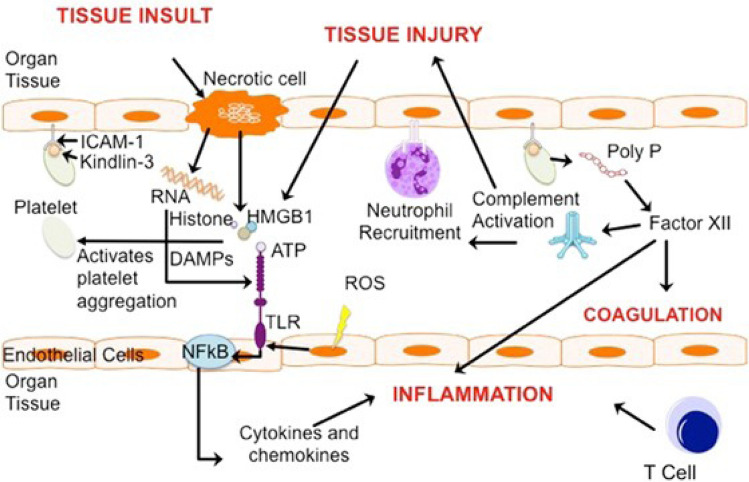Fig. 6.
Mechanisms of Sterile Organ Injury. Toxic insults initiate both controlled and uncontrolled cell death in endothelial cells leading to apoptotic/necrotic tissue and release of intracellular cell components into the extracellular space. These include immunogenic compounds such as RNA and DAMPs (HMGB1, ATP and Histone) which bind to and activate specific TLRs, driving the NFkB-mediated transcription of pro-inflammatory cytokines. Platelets adhere to the endothelium via ICAM-1 and Kindlin-3. Activated platelets release Poly P, which activates Factor XII, and subsequently, complement. This results in activation of the coagulation pathways and further tissue injury, edema and inflammation. Activated T cells release pro-inflammatory mediators and can cause direct cytotoxicity. High mobility group box (HMGB)-1, damage associated molecular patterns (DAMPS), toll-like receptors (TLR), reactive oxygen species (ROS), polyphosphates (Poly-P), adenosine triphosphate (ATP)
(From Silk E et al. Cell Death Disease 2017; 8: e2812. With permission)

